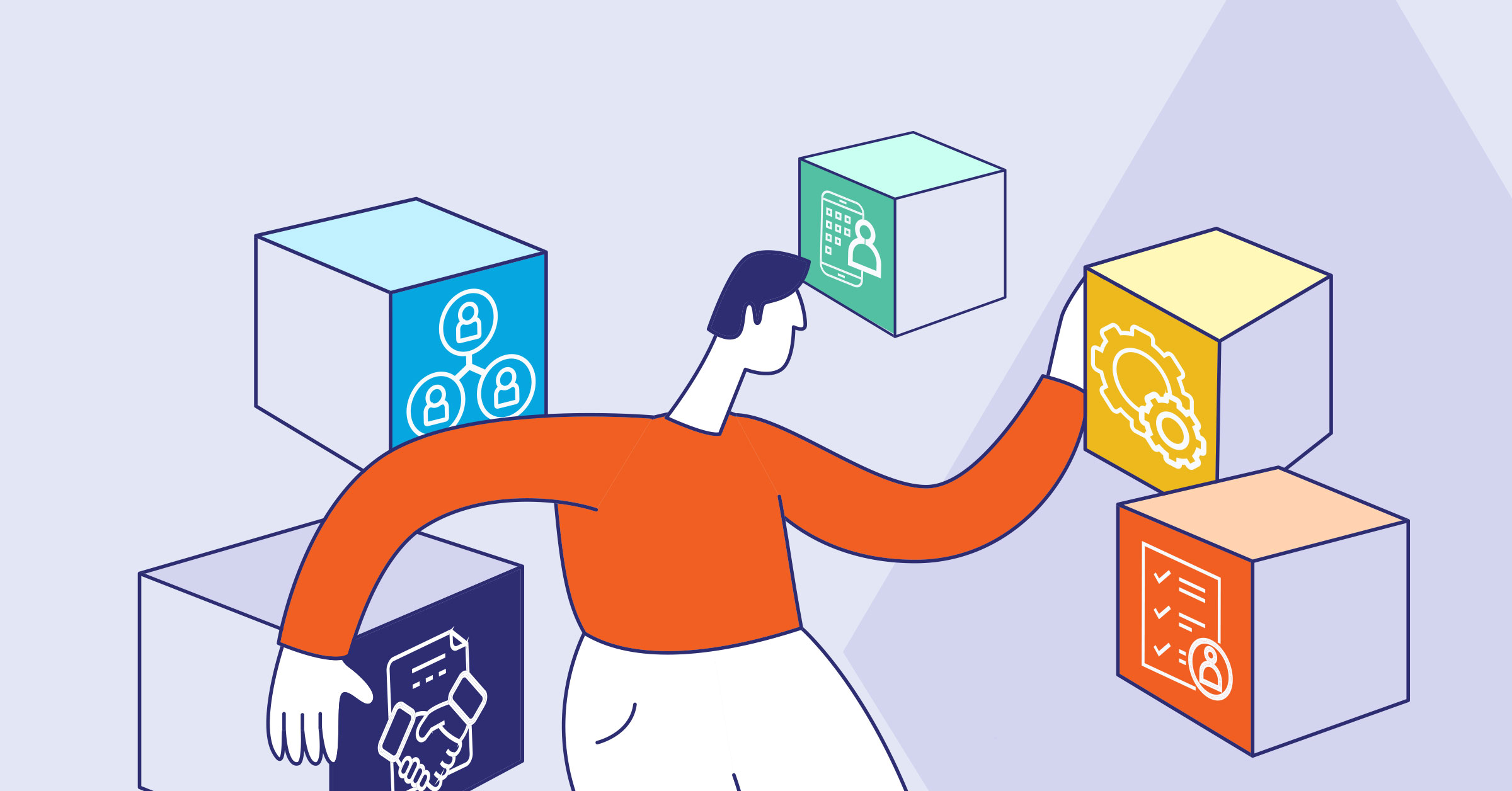“My company’s behind the times” isn’t something most people would willingly admit, especially in large, well-known industries.
But the truth is, the modern legacy technology that’s rife within many corporate-level operations is stopping large industries, especially insurance, from meeting the ever-increasing status quo for how large companies serve and interact with their customers.
The recent shifts in employee benefits — and the resulting demand on benefit providers’ technology capabilities — means benefits insurers must make fast-paced tech upgrades to keep up. Without the right underlying technology, these enhancements can be difficult to implement, deploy, and manage.
1. Most employees want a holistic approach to benefits
Millennials, Generation Z, and Generation X comprise the vast majority of the U.S. workforce, with the former holding the largest overall share since the late 2010s. All of these groups have an interest in more expansive and holistic employee benefits.
Millennials and Gen Z saw multiple recessions, health crises, and general upheaval in a fairly short time — and at impressionable ages. They know almost viscerally that their health and finances can be at risk anytime and want benefit offerings that account for such uncertainty. Members of Gen X want the same from employee benefits as their younger counterparts, but in their case, this priority springs from managing their health and financial needs alongside their children and/or their aging parents.
To provide the robust benefits packages employees expect, employers sometimes opt to deal with a wide range of carriers and services, rather than just one carrier. These disparate solutions are a headache for them, and most prefer the benefits packages they buy to be as integrated as possible, and from a single source.
2. Integration for benefits insurers
Given all the recent talk of “ecosystems” in insurance, an industry newcomer might think the concept is brand-new. But benefits insurers are used to managing operations across multiple systems from different providers: payroll, benefits administration, enrollment, and many others.
However, because “ecosystems” weren’t common in other areas of insurance, benefits providers have historically been forced to deal with hard-coding forced integrations, with plenty of manual labor required to pick up the slack of technology. Open APIs were not readily available from any core system vendor, so benefits insurers had to just take it on the chin, so to speak. This doesn’t mean the work of digital transformation isn’t worth the benefits, but it won’t be easy to realize the desired outcomes with modern legacy core technology.
As demand for holistic benefit offerings grows, this requires dealing with more third parties, increasing the associated technical burden, putting benefits insurers at a crossroads: Either keep bearing the pain and steep maintenance cost of hard-coding an ecosystem, or upgrade to future-proof coretech like EIS Suite to make these integrations seamless and easy to manage.
3. The increasing expectation of personalized CX
Many insurtechs within the benefits space have cropped up to offer the personalization and easy UX interfaces needed to enrich the end-user experience. Employees want this from their benefits, as employers well know, so there’s a clear gain for all involved.
If benefits insurers have coretech tailor-made for interoperability with these insurtechs and forward-thinking benefits ecosystem partners, they can meet this demand. Conversely, attempting to support these solutions with limiting modern legacy systems is a surefire route to a headache.
4. The rise of voluntary benefits
From supplemental short- and long-term disability coverage to financial counseling, identity theft protection, pet insurance, and more, the variety of voluntary offerings on the market is reflective of employees’ increasing interest in holistic benefits packages.
Folding these new products into their portfolios will not be easy for benefits carriers who rely on outdated core systems: This task will be both time-consuming and resource-exhaustive with old school infrastructure, whereas updated, future-proof coretech like EIS Suite makes it much simpler.
5. Brokers’ influence on modernization
Technological capabilities are the major determinant of whether a broker recommends an insurer to an employer or not. Concurrently, employers rely heavily on brokers to design better benefits programs with wide-ranging, more personalized offers.
Brokers expect insurers to be technologically prepared for these demands, and they’re far more likely to recommend insurers with the necessary tech capabilities than those without. (Even if they’re more expensive.)
Jumpstart your modernization with strong coretech
It’s impossible to ignore the problematic issues benefits insurers will have to work with if they continue using modern legacy core systems. They simply weren’t designed with the expectation that the insurance industry would evolve as it has, so maintaining them is unsustainable.
To keep pace with the industry’s changes, benefits insurers need cutting-edge, better-architected coretech that operationally supports the holistic benefits experience employees want. Coretech from EIS can simplify the systems upgrade process and ensure your offerings perform reliably and effectively.
Through its cloud-native deployment, microservices-based architecture, and thousands of open APIs, EIS Suite streamlines the integrations today’s benefits insurers require. You can leave behind the hard-coding and error-prone manual labor of legacy integrations for good.
For a comprehensive examination of the need for customer-centric approaches in benefits insurance and how the right foundation lets you leverage the insurtechs (and services) your customers want, read our eBook “When Insurtech Meets Coretech, the Customer Wins.”




